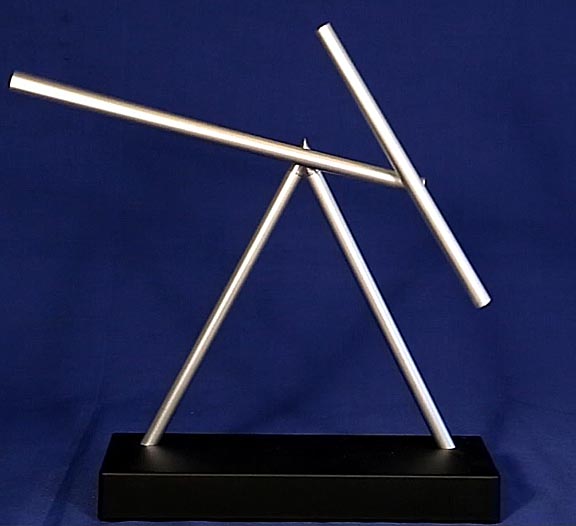


Ever since a swinging sticks kinetic sculpture was featured in the movie Ironman II, they have become very popular. Once costing as much as $1,000, they are now available for less than $200, though $300-$400 are more typical prices. Quiet, entertaining and attractive, they're a great way to introduce a little life into an otherwise dull room. Because they are so popular, many people are beginning to ask, "How do they work?" This page answers that question.
The fact that they require four AA batteries suggests that there is a magnet in the base that keeps the primary pendulum moving. While that's true, it's only half of the story. The problem is that if the base only held a magnet that gave the primary arm a little push every time it swung past, the arm would continue to spin faster and faster until it eventually reached an unstable situation and fell over. Here's how the swinging sticks sculpture prevents that:
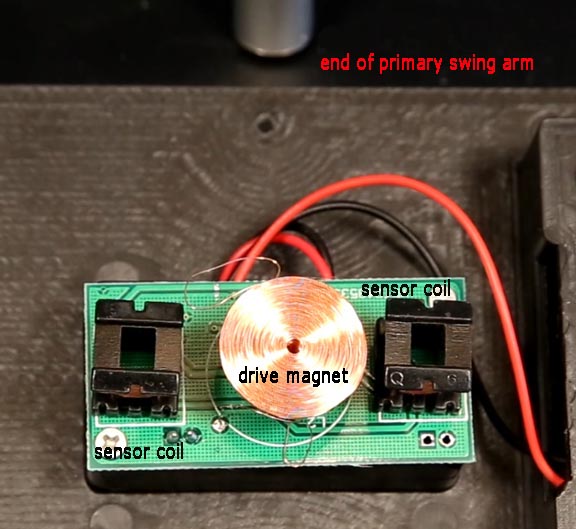
The end of the primary arm has a very powerful rare earth magnet in it. As it sweeps past the drive magnet, the drive magnet is pulsed to create a magnetic field the same polarity as the arm's magnet. The two fields repel each other and the arm gets a small push that keeps everything moving. Two sensor coils are mounted on each side of the drive magnet. Because one senses the arm's magnetic field before the other, a circuit underneath the sensors can use this information to measure the arm's velocity. If it's going slowly, they pulse the drive magnet to give the arm a push. But, if the arm gets going too fast after repeated pushes, the sensor coils detect this and prevent the drive magnet from firing. Once the arm's velocity slows down, they signal it to start pulsing once again.
And that's it!
Watching a
swinging sticks sculpture is strangely mesmerizing, like watching a
log fire. But it's also deceptive. It appears that the two arms swing
in simple circles. While this is true of the primary arm, the
secondary can follow amazingly convoluted paths. To capture some of
them, I covered the back of a swinging sticks kinetic sculpture with
black paper and photographed it with a camera lens held open for five
seconds. In the following images, the large, faint, circular disc is
created by the primary arm sweeping in simple circles. The more
complex and brighter patterns were made by the smaller secondary arm:
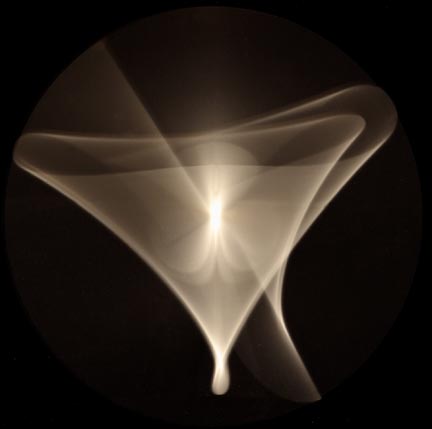
In the image
above, the secondary arm only moved a little and was mostly vertical.
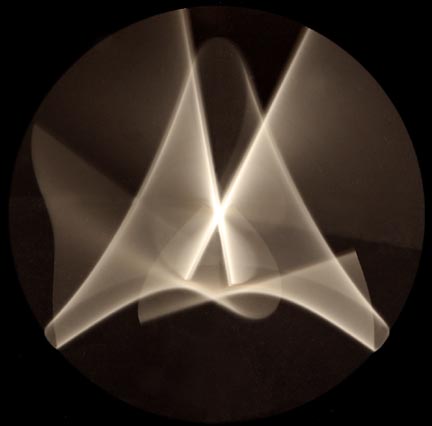
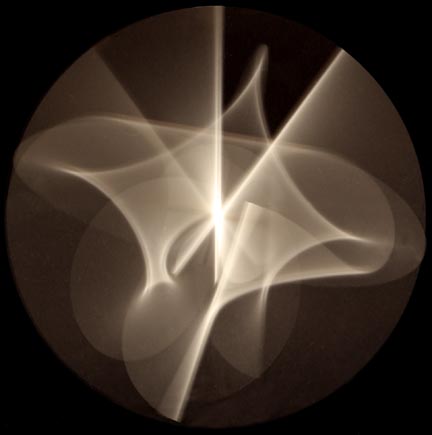
In this image
the secondary arm was rotating rapidly.
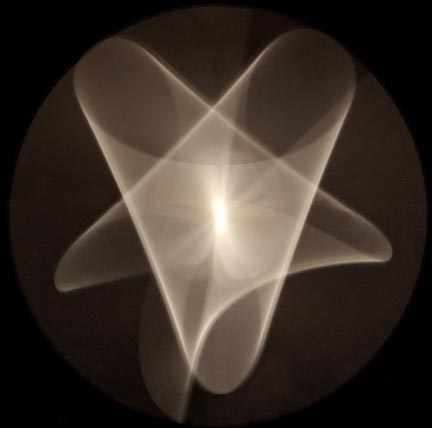
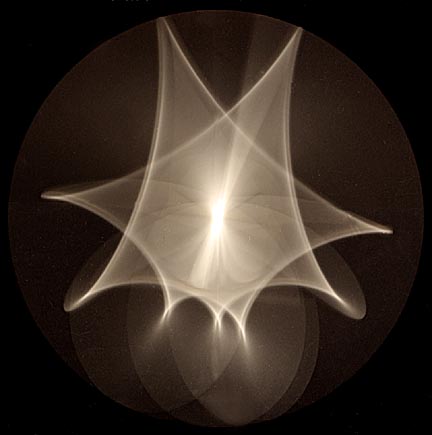
The apparent double image some of the lines portray was caused by the fact that the secondary arm wasn't a thin line, but a tube. What's being shown is both sides of the tube creating parallel images. To more clearly portray the complex motion of the smaller arm, I mounted an LED light in the end of it to record the following images:
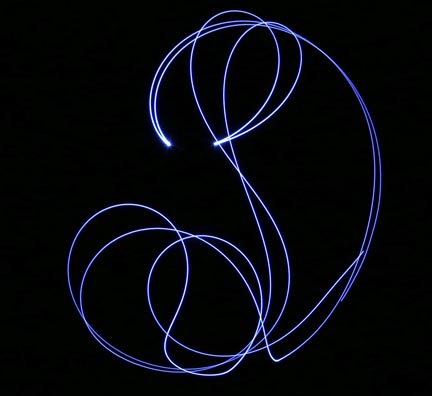
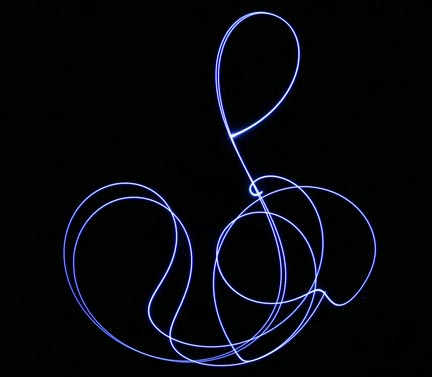
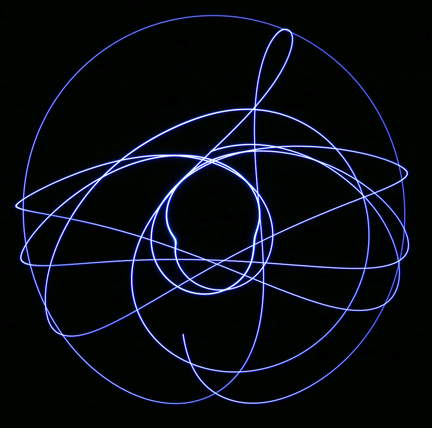
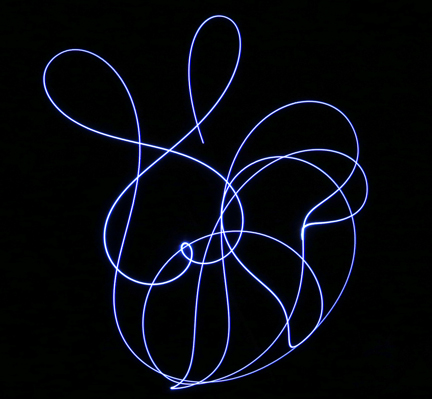
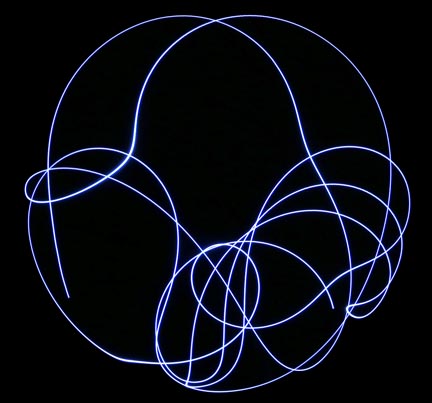
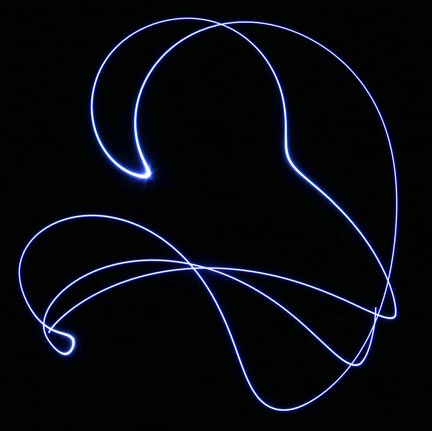
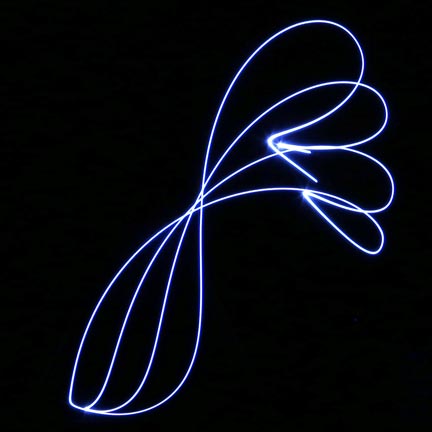
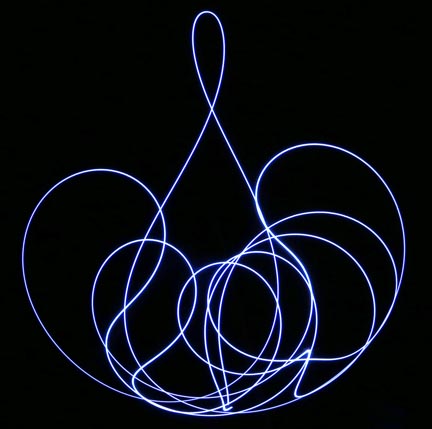
This video explains how this images were captured:
Visitors
preferring a live action version of this page may view it in the
following video:
This video provides a close-up view of the circuit that drives it:
Thank you for logging onto this page. I hope you found it interesting
Return to my main page to browse 60 other subjects